in defense of moss
I hope you'll be lichen this one! (yes, I know moss and lichen are different but I can't resist the softball of the pun ok? Maybe next week we will discuss lichen, which is equally as fascinating.)
“Odd as I am sure it will appear to some, I can think of no better form of personal involvement in the cure of the environment than that of gardening. A person who is growing a garden, if he is growing it organically, is improving a piece of the world. He is producing something to eat, which makes him somewhat independent of the grocery business, but he is also enlarging, for himself, the meaning of food and the pleasure of eating.” -Wendell Berry
If you’ve ever walked anywhere with me, chances are that I’ve stopped dead in my tracks to crouch down and admire some really cool moss and snap a photo. I’ve always loved it, but since reading Gathering Moss by Robin Wall Kimmerer last year, I caught moss fever and the only prescription is more moss.

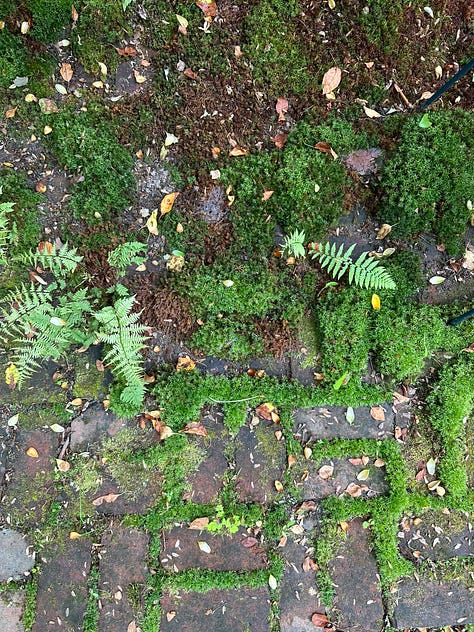
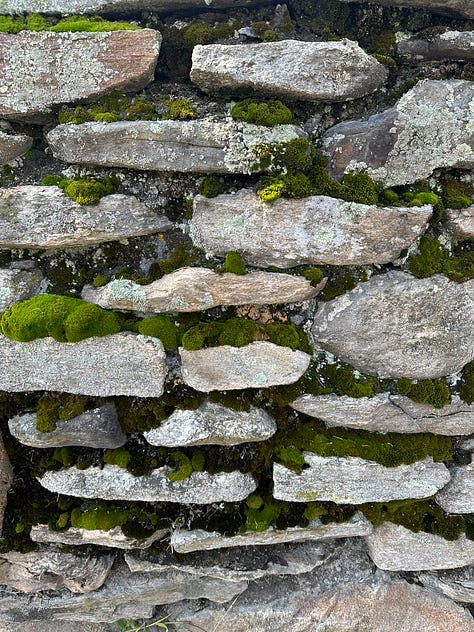
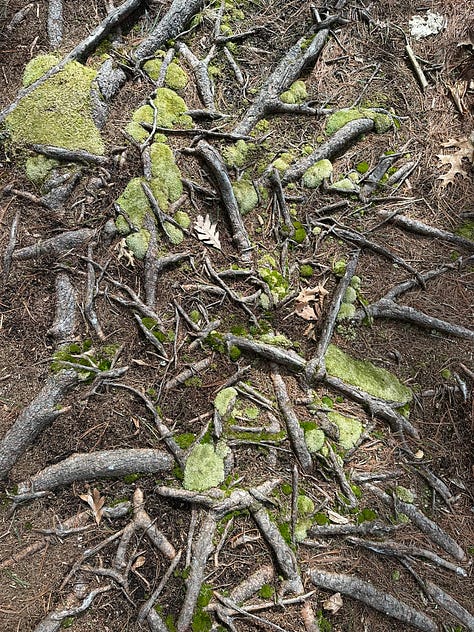
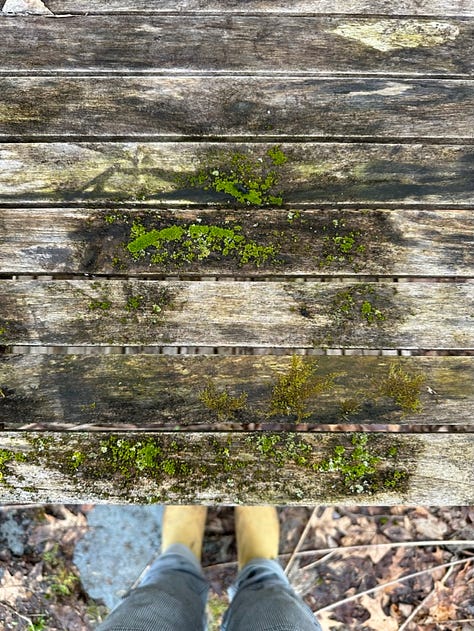
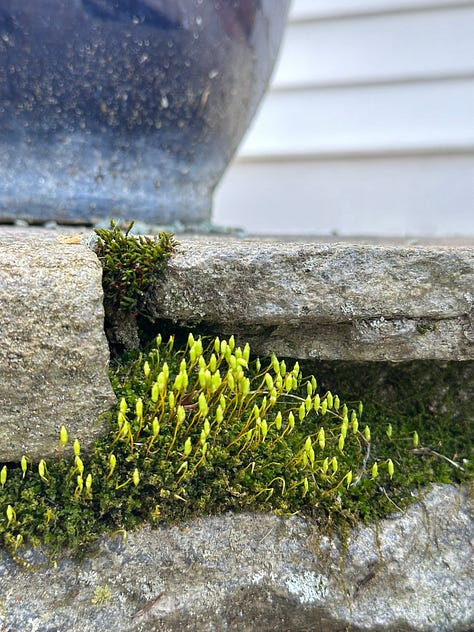
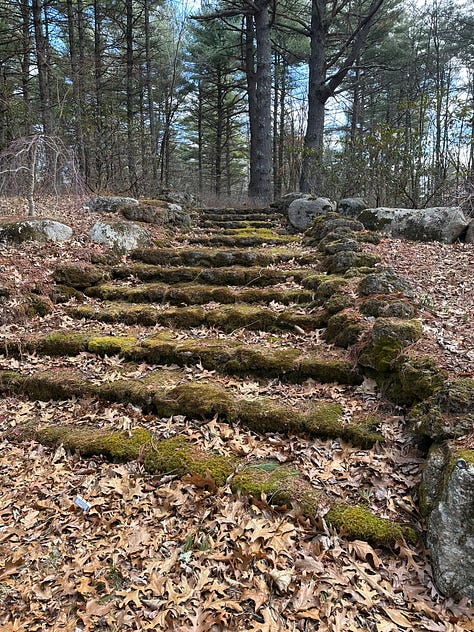
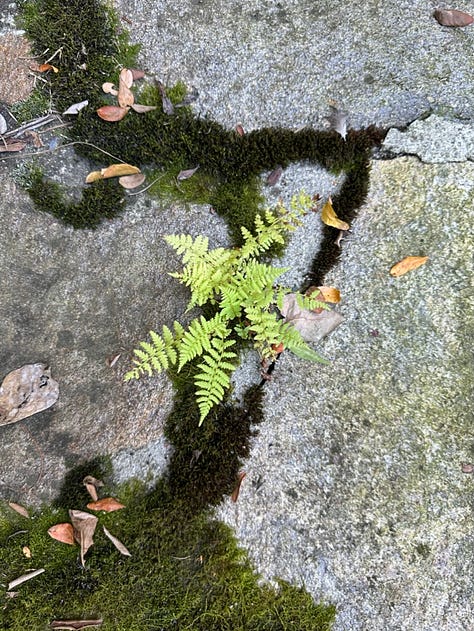

I thought this might be a fitting issue to discuss in a newsletter, as I’ve been thinking a lot about lawns and the many industries that abound to help people get a picture perfect lawn —with nary a weed, misplaced flower, speck of moss or lichen in sight.
This page from Scotts all about how to do battle with your mossy lawns actually heebied my very last jeebie. Reading lawn care marketing jargon makes me feel like I’m in a creepy episode of Black Mirror where everyone is fixated on perfecting their grass, spending money on icky, expensive chemicals, and shaming anyone in the neighborhood who doesn’t comply. Humans’ obsession with controlling nature simultaneously fascinates and terrifies me.
This is just a glimpse into some common SEO search terms that indicate people see moss in the yard as a problem to remedy, instead of cause for a mini nature celebration:
Mosses, belonging to the division Bryophyta, encompass over 12,000 species of small, nonvascular, spore-bearing land plants. They are globally distributed, thriving in moist, shady environments such as woodland and forest floors. Mosses play a crucial role by breaking down exposed substrates, releasing nutrients that benefit more complex plants. Additionally, they aid in controlling soil erosion by providing surface cover and absorbing water, contributing significantly to the nutrient and water dynamics of various vegetation types.1
Unlike traditional plants, moss has no roots, drawing moisture from the air and thriving in the undisturbed nooks of the natural world.
The Royal Botanic Gardens, Kew, highlights some of the many marvels of moss:
They’re ancient plants —they date back 450 million years, and have survived and thrived through a range of drastic climate changes.
They don’t have roots —instead they have rhizoids, which are small hairlike structures. Their main function is anchoring the plant to rock, bark or soil.
They’re incredibly resilient —some mosses have even been known to survive temperature highs of 100ºC when dried out, and lows of -272ºC.
Mosses function like sponges, using their capillary spaces to hang on to water — and they're among the first plant colonizers of disturbed sites, such as when an area is deforested or affected by forest fires. They stabilize the soil surface and retain water, helping new plants to grow.
They’re good for temperature control —mosses can impact the temperature of the soil, both warming it up and cooling it down depending on the environment.
Some mosses are luminous —some mosses have adapted to low light conditions and are even found growing in caves.
They’re pillars of biodiversity —moss communities offer microhabitats that are critical to the survival of a diversity of organisms. They provide valuable shelter for insects to live, lay their eggs and hunt for food.
A lot of people see moss as a nuisance in their lawns because it doesn’t fit the traditional, manicured aesthetic of a bright green, uniform grass lawn. Decades of lawn care marketing have pushed the idea that a "perfect" lawn is thick, lush, and weed-free—anything outside of that, including moss, is seen as something to eliminate. Moss tends to thrive in conditions where grass struggles (shade, compacted soil, high acidity), so people often view it as a sign of poor lawn health rather than an indicator of a thriving micro-ecosystem.
But honestly, in 2025, if your lawn has moss you can chalk that up to a big win! You’ll save money, as it’s much lower maintenance than grass. You’ll also save yourself time and energy — who wants to be out aerating and spraying and reseeding and fertilizing a lawn? It requires no mowing, no fertilizers, no pesticides, and very little water—it just exists, quietly absorbing carbon, filtering pollutants, and creating a soft, green carpet that feels amazing underfoot. In places like Japan, moss is celebrated for its beauty and resilience in gardens, adding a sense of peace and timelessness.
Robin Wall Kimmerer, a distinguished bryologist and professor of environmental biology, emphasizes the profound lessons mosses offer in addressing the climate crisis. In this interview with The Guardian, she suggests that mosses exemplify sustainable living through their modest resource use and cooperative existence. Kimmerer advocates for adopting a more reciprocal relationship with nature, learning from mosses to live harmoniously within our ecosystems. She believes that by observing and emulating these ancient plants, we can find guidance toward a more sustainable and interconnected way of life.
Mosses are incredibly resilient and have multiple ways of reproducing, either through spores or, when necessary, by cloning themselves. They can survive extreme conditions by entering a state of suspended animation, allowing them to withstand significant stress. Remarkably, moss can lose up to 98% of its moisture and still bounce back once it’s rehydrated. In fact, even after decades of dehydration, mosses have been revived simply by soaking them in water, showing just how tenacious and adaptable these tiny plants truly are.
There are entire Reddit threads devoted to homeowners seeking advice for how to eliminate moss on their lawns. But thankfully, there are other threads and whole pages devoted to moss appreciation. This post sums up my feelings about the matter:
No I’m not high, I just love moss.
I was also elated to discover upon my extensive moss Googling that a Martha Stewart article sings the praise of moss lawns, and encourages and educates homeowners on how to grow them. We all know Martha has always been a trendsetter, so here’s hoping that 2025 is the year of letting moss run rampant in our yards.
Moss is a quiet, often overlooked marvel of nature. Next time you’re in a garden or walking through the woods, crouch down and take a closer look at the intricate, vibrant textures that make up these resilient little plants. And while you’re at it, tag me in a photo on Instagram. I don’t want to see any fast fashion hauls this year, only moss walls.
Until next (pizza) Friday,
Amy
LOLs of the Week
Reading
Fourth Wing by Rebecca Yarros (Finally finished the final ACOTAR book and no, I still don’t like Nesta sorry I feel very strongly about this! Also someone said if I didn’t like Nesta then I won’t like Violet so here goes nothing I guess!)
Kitchen Confidential by Anthony Bourdain
Second Nature: A Gardener’s Education by Michael Pollan (Thank you to whoever recommended this to me! It was either a Substack comment or an Instagram DM, but book recommendations are one of my love languages, truly.)
Listening
Growing
I’m in zone 6a here in Central Massachusetts, which means it’s ~10 weeks before last frost. I use May 20th as our tentative first frost-free date, as historically that’s what our microclimate has dictated. A frost-free date is an estimate of when your area should be safe from freezing temperatures in the spring, but it’s not a guarantee. Think of it as a general guideline based on past weather patterns. Some years, frost might linger a little longer, and other years, it might warm up sooner. If you’re confused about what this means for your location check out this handy dandy tool!
This week I sowed two trays: one full of various pepper varieties, the other with loads of greens. For the variety curious here, I’ve included exact varieties below, and linked to whatever seed companies came up first in a Google search to make it easier for you to find them! Yes, I realize I am heavily over-indexed on Swiss chard varieties. What can I say? I’m a sucker for a leafy green. Just wait until I plant the rest of my kale varieties this weekend.
Peppers
Greens
Making
This year, I’m trying my darndest to make everything within reason from scratch —meaning, the goal isn’t perfection, but stretching myself to rethink my grocery store purchases. I’m talking all baked goods, granola, crackers, sauces, dressings, dips, etc. I’m trying to be strategic about making and freezing extra, planning ahead, and getting the kids involved. This isn’t a tradwife/everything is poison vibe, but more of a “everything at the grocery store is so freaking expensive and I’m sick of it” frugal hippie vibe, ya feel me?
This week was a big travel week for us —4 days in New York, followed by various day trips around New England, so we have been relying mainly on chest freezer soups with sourdough for dinner, but I did throw together some flour tortillas for quesadillas last night. Next week we’ll be back to business as usual, as my daughter has been out of school the past two weeks for Spring break —I thrive on routine, and there has been none recently! In a good way, but still. My mind, body, and spirit have been craving a dense bean salad after all the delicious bagels and pizza from New York.
Loving
Bernie Sanders. I’ve been a Bernie fan since 2016 (HE WAS ROBBED!) and have always admired his unwavering dedication to his principles —not blowing whichever way the winds blow, as many other politicians are prone to do. I donated to him, was excited to vote for him, and if I let myself dwell on the presidency we could have had, I tear up. So seeing him travel the country, talking to frightened, angry, struggling Americans, and speaking truth to power about the oligarchy and kakistocracy we’re currently living under has been stoking my flames of hope. I’ve been wearing my Bernie sweatshirt around my very purple corner of Massachusetts—just to make sure people know that while I may be blonde and occasionally drive a pickup truck, my other car is an old Prius, and I’m a raging progressive.
Our koi pond. We opened it up for the season last weekend, and hearing the trickling waterfall and watching the fish lazily float around is the level of calm I need in my life right now. To answer a few common questions: it was here when we moved in, the koi are 20+ years old, they go into a state called torpor during the winter which is like their hibernation, we add pond plants in the spring, have lost a few goldfish to herons over the years, and I have no idea how many little goldfish we have, nor do I understand how they procreate.
Link Roundup
How (and Why) to Host a Bird Sit [Audubon]
How an American Radical Reinvented Back-Yard Gardening [The New Yorker]
Why Did Elon Musk Go After Bunkers Full of Seeds? [New York Times]
What Bird Brains Can Teach Us About Learning a New Skill [Discover Magazine]
The European towns that give away free chickens [BBC]
I don’t believe in gatekeeping gardening, so this newsletter will always be free — but if you’d like to support my work (or just fuel my next pizza night!), I set up this little Buy Me a Coffee page. Thanks for being here!
Enjoying Pizza Friday? Share the love and forward this email to a friend you think would dig it so they can get in on the fun, too. Like pebbling, which is what penguins do! They bring little trinkets like pebbles to their loved ones. How precious is that?


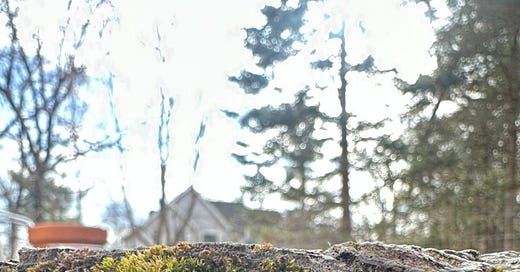



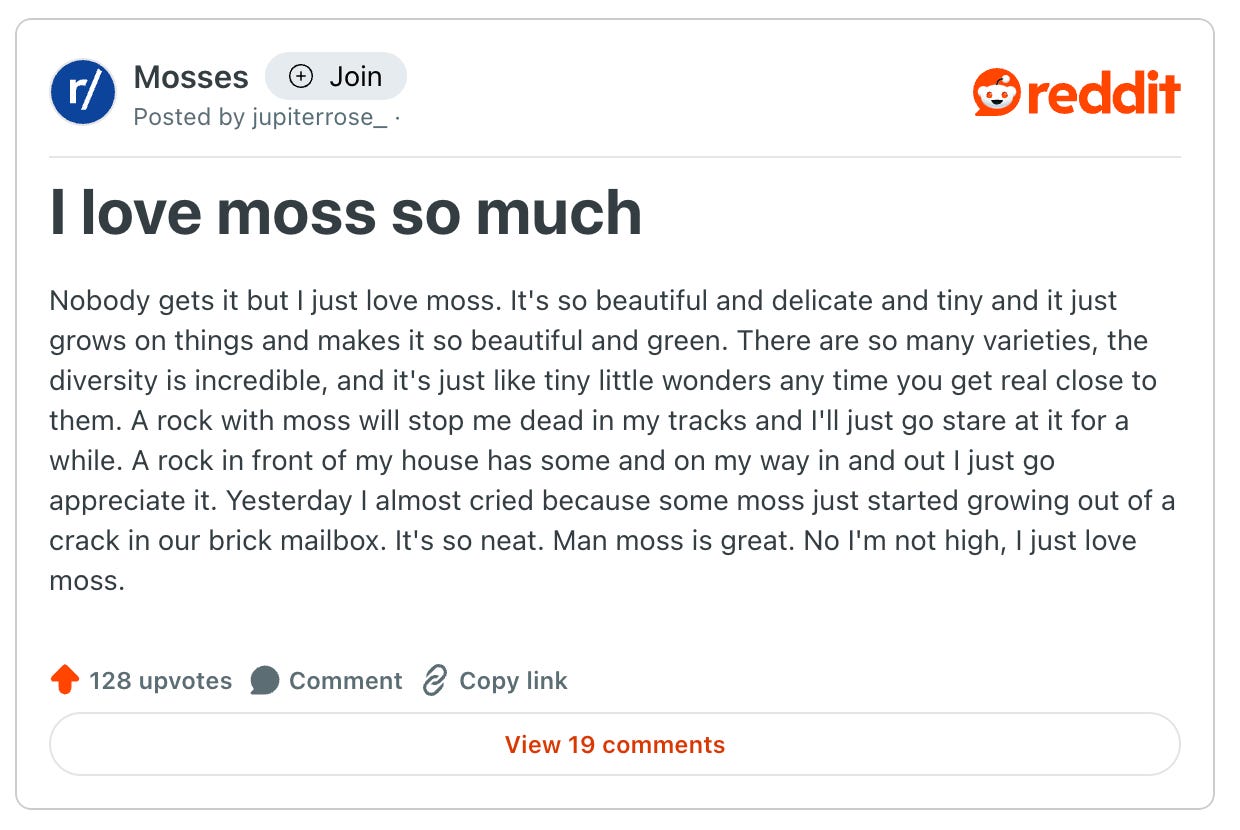

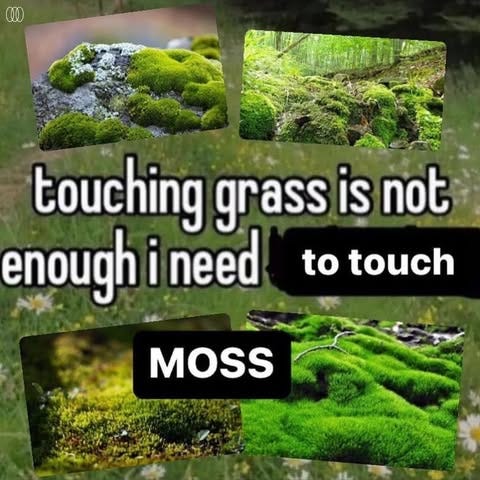





Great Post! On the farm that we are rewilding (mostly-I also have a lot of domestic fruit trees), I often find orchids of various species popping up in areas of moss. I tell myself that those species must like the same mycorhizae as the mosses are in community with. The more consistent moisture can't hurt, either.
Big fan of moss. Big. HUGE. 💚💚💚